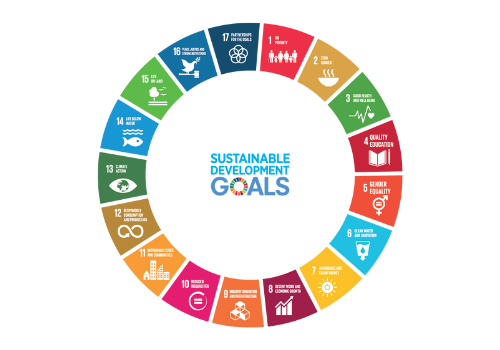Three ways work to end leprosy is helping achieve the Sustainable Development Goals

In September 2015, world leaders from 193 countries agreed an ambitious set of 17 targets to create a better, fairer world: a blueprint for peace and prosperity for all people now and for the future. These targets are known as the Sustainable Development Goals (SDGs) and set out priorities for the next 15 years.
The SDGs include targets on ending poverty, fighting injustice and inequality and tackling climate change. They encourage governments, private companies, individuals and charities to work in partnership to achieve these targets and bring about long-lasting change. They also recognize that for as many people as possible to benefit, there must be a balance between social, economic and environmental development. Central to the SDGs is the commitment to 'leave no one behind, meaning that the world's most marginalised and vulnerable people should be prioritised.
An integrated approach
The SDGs are integrated, meaning that progress towards one goal has an impact on other goals too. Defeating leprosy is a great example of how this works. We know that leprosy affects the world’s poorest people and the effects of the disease drag people further into poverty.
Ending poverty (Goal 1), reducing inequalities (Goal 10), and ensuring everyone can access clean water (Goal 6) and quality healthcare (Goal 3) will all contribute to ending leprosy for good. And the impact of ending leprosy extends far beyond improving people’s health. It will remove barriers to education (Goal 4) and decent employment (Goal 8) and also reduce hunger (Goal 2) and injustice (Goal 16).
Our mission will always be to defeat leprosy, but by addressing the SDGs we can tackle the root causes of the disease and the injustices that people it affects so often face. We’re passionate about sustainability, which is why we always design our projects in partnership with local communities and organisations who can continue to drive forward change long-term. And our commitment to sustainability is also why we carefully consider the wider impact of our projects on communities and the environment.
Here are three examples of how your support for people affected by leprosy is helping achieve the SDGs.
Sri Lanka

In Sri Lanka, our partner organisation Kaveri Kala Manram (KKM) has provided families affected by leprosy with toilets and clean water supplies after they realised that discrimination was making it difficult for some to use communal facilities. Vasutha is just one of those who has benefited. “Having the water facilities, we were able to set up our own home garden, growing plenty of vegetables and fruit trees for our daily needs. This was a huge transformation in our life,” she told us.
Encouraging families and communities to produce their own food is an important part of KKM’s work. Every month staff host a community meal where the guests help to gather and cook nutritious, home-grown produce. The evening includes a cookery demonstration and a drama presentation about nutrition and leprosy. Eating healthily is especially important for people living with the effects of leprosy, to help build up their immune systems. And growing their own food helps ensure families have a sustainable source of healthy food at low cost.
Nepal

In Nepal, an innovative project is helping people affected by leprosy and disability gain the skills needed for employment. We’re also working with employers to remove barriers to employment for disabled people. This is not only providing people with the opportunity to escape poverty: it’s also good for businesses and the economy as it increases the talent pool available to employers, lowers employee turnover, increases productivity and improves workplace culture.
Mozambique

In Mozambique, your gifts to 2021’s Unconditional Appeal are funding new community hubs across two provinces. These hubs will be bases for raising awareness of leprosy and combating stigma, providing a safe space for leprosy self-care groups to meet.
The hubs will also be used by the wider community with activities such as farming training and savings groups. The hubs are powered by solar panels and run educational sessions on leprosy, general health and wellbeing, and climate change, something which is vitally important in a region which is increasingly prone to both floods and long periods of drought. They provide the community with the tools to monitor climate-related risks and broadcast weather warnings, helping farmers to plan accordingly.
As we head towards 2030 and people and governments around the world look to step up efforts to achieve the SDGs, The Leprosy Mission’s global family – with your committed support - will continue to do all we can to make sure that people affected by leprosy are not left behind.